Students who use AAC need opportunities during each school day to function independently. This gives the students a sense of being competent, contributing members of the classroom and school community. This also gives the students a greater sense of their own ability to have control of their achievements and success in school, both academically and socially. The focus for our students is to move toward greater autonomy, independence and self-advocacy.
The student’s educational team members (teacher, instructional assistant, speech language pathologist, occupational therapist, physical therapist, assistive technologist) maximize opportunities for the student to be self-determined in their own education, in their social development, in their communication and language development, and in all activities during the school day, both academic and recreational by:
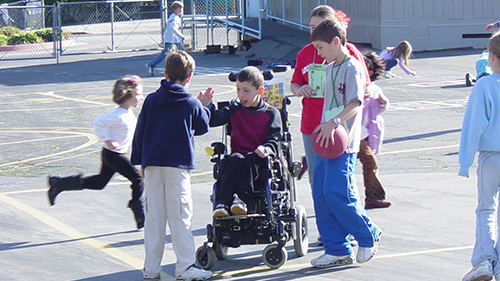
School playgrounds provide a multitude of opportunities for peer interaction. Recess time provides a natural context for students to develop friendships while engaging in games and activities of mutual interest. These opportunities typically include spontaneous student-created games, social groups where students are just hanging out and chatting, as well as more structured games that can be planned in advance.
By renovating playgrounds and making them accessible to students of all abilities, physical barriers to play are being systematically removed. New play structures on level, rubberized surfaces with wheelchair ramps up to all levels as well as equipment that can be manipulated by students with physical challenges is becoming more commonplace in school and community playgrounds.
Other examples of accessible play equipment are bucket swings with harnesses for trunk-support and sand/water tables with adjustable heights. Even given all of these improvements, there can still remain barriers on the playground that need to be assessed for students with Severe Speech and Physical Impairments (SSPI). These include access to communication tools and devices in this loud outdoor environment as well as access to play equipment that has not yet been adapted for physical needs.
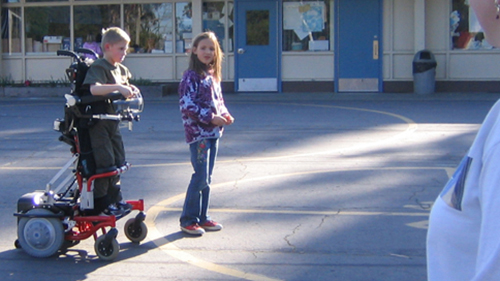
Student uses mobility device that allows for safe independent movement and participation at the same level as peers.
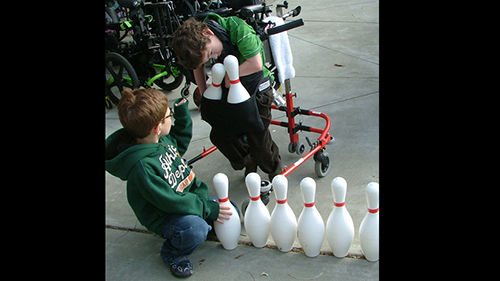
Upright, hands-free mobility and level playing surfaces allow for self-initiated movement and equal participation in the game.

Student-initiated games with adapted equipment allow opportunities to express creativity without adult involvement.
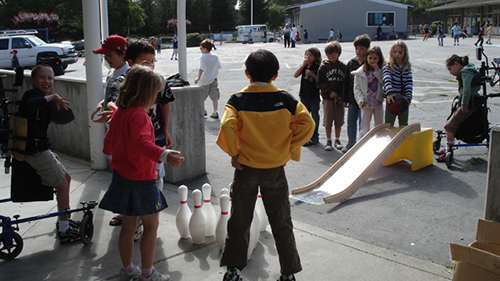
Adapted equipment provides balanced participation.
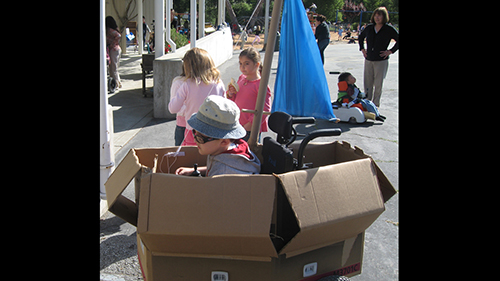
Student has safe independent mobility, creatively adapted to draw in peers for imaginative play.
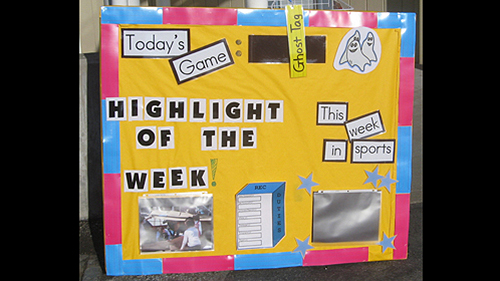
Visual display of recess activity allows peers to quickly understand the rules, roles and equipment use for the game.
Engineering the environment includes adaptations that staff can make to equipment and to the playground space to make it more accessible for students and to ensure their safety. It is also essential to engineer the play environment and equipment in order to maximize opportunities for social engagement and to minimize the need for adult support. The adults supporting students at recess need to continue to assess activities on a regular basis for equipment needs (appropriately adapted), communication needs, mobility needs and peer interest.
Some of examples of adaptations that can be made to engineer the environment are:
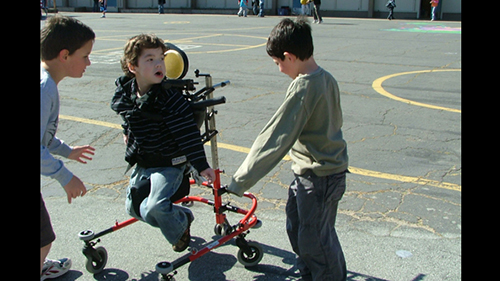
Appropriate upright-mobility and voice-output communication devices promote social orientation and interaction with peers.
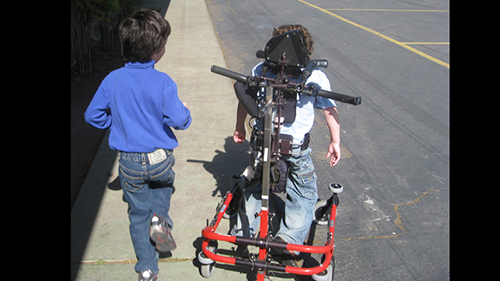
With barriers removed and utilizing appropriately adapted equipment, students are able to explore the playground together.
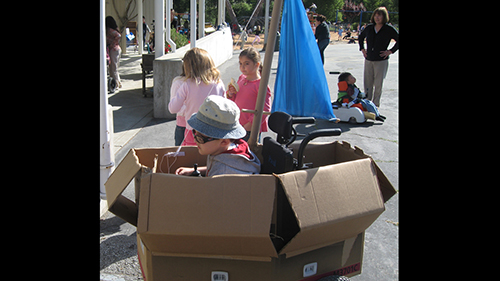
Appropriately adapted equipment allows for safe imaginative play.
In order for our students to have maximum participation and inclusion in recess activities with their peers, it is essential that they have the appropriate assistive technology tools required for independent communication and mobility. For communication, this consists of appropriate high-tech and low-tech communication tools and devices that are easily accessible and programmed with vocabulary appropriate to the recess activity. For mobility, this consists of equipment that allows for self-initiated movement and engagement within recess activities as well as social orientation and interaction with peers.
The adult supporting students at recess needs to assess activities on a regular basis for any additional assistive technologies necessary to meet students’ ongoing communication and mobility needs on the playground.
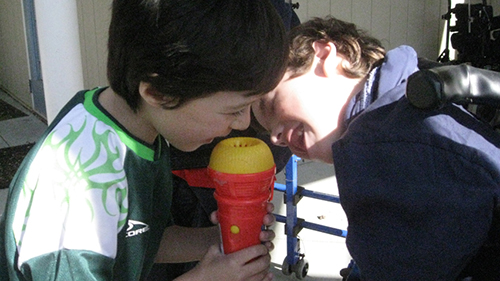
The Instructional Assistant allows time for students to get to know each other and their varied modes of communication.
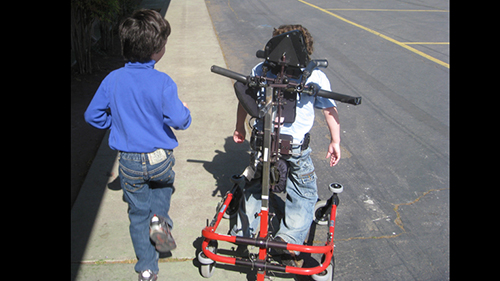
The Instructional Assistant encourages consistent peer buddies as a way to increase student’s comfort and confidence in participating more independently.
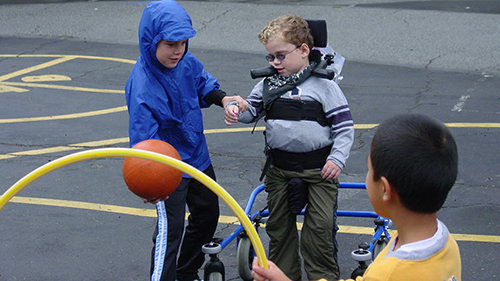
The Instructional Assistant ensures that peers have knowledge about student’s motor ability and how student can use own movement to manipulate play equipment.
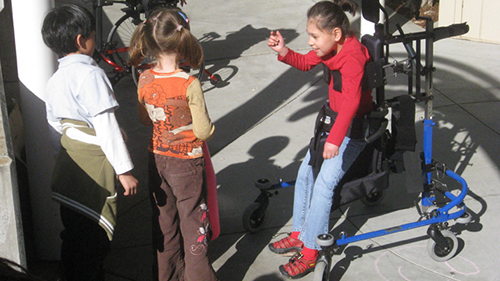
The Instructional Assistant fosters opportunities for students to make their own choices, problem-solve together and negotiate play.

The Instructional Assistant provides support in ways that encourage movement.
Peer interactions on the playground provide a natural context for authentic friendships to build. In addition, peers provide natural supports to students with severe speech and physical impairments thereby allowing the instructional assistant to step back and fade their support.
Through peer relationships:
The Instructional Assistant can engage, educate and encourage peer partners by:

The Instructional Assistant provides support unobtrusively to foster independence and allow peers to provide natural supports.
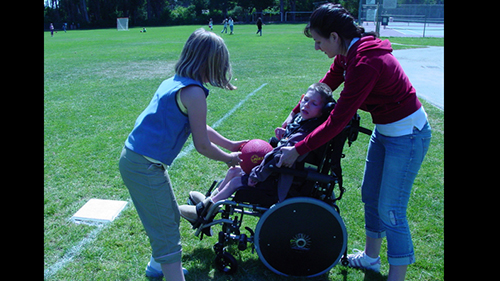
The Instructional Assistant provides physical support minimally, only as needed, and unobtrusively from behind so peers are facing each other.
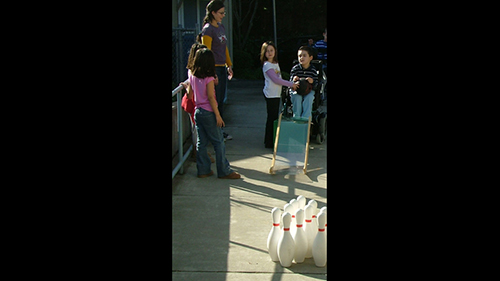
The Instructional Assistant employs a ‘wait and see’ approach rather than interrupting peers’ attempts to communicate and negotiate play.
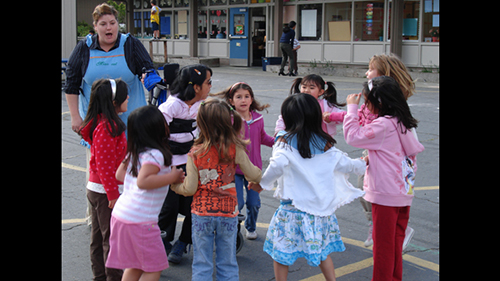
The Instructional Assistant fosters natural peer supports and interactions.
The role of the Instructional Assistant is critical to the success of students with severe speech and physical impairments in inclusive recreational settings. The four key areas of support that Instructional Assistants provide to these students are the following:
While providing support to the student, consider the following:
With the Planning For Independence Framework completed, the environment engineered and assistive technology supports in place, the Instructional Assistant provides support as unobtrusively as possible to foster the independence and autonomy of the students and to allow peers to provide natural supports.
The progression for systematically fading Instructional Assistant support is as follows: